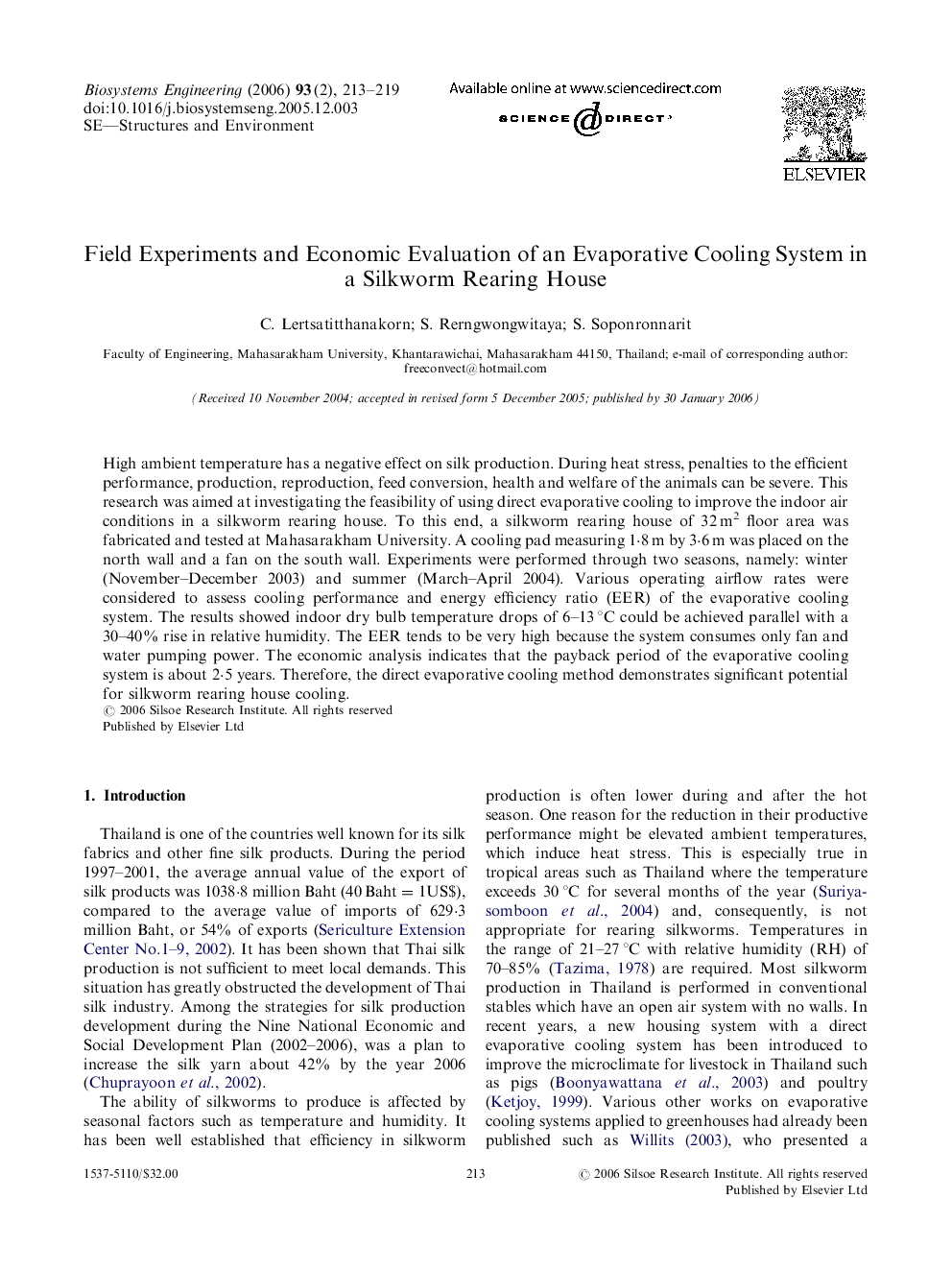| Article ID | Journal | Published Year | Pages | File Type |
|---|---|---|---|---|
| 1712787 | Biosystems Engineering | 2006 | 7 Pages |
High ambient temperature has a negative effect on silk production. During heat stress, penalties to the efficient performance, production, reproduction, feed conversion, health and welfare of the animals can be severe. This research was aimed at investigating the feasibility of using direct evaporative cooling to improve the indoor air conditions in a silkworm rearing house. To this end, a silkworm rearing house of 32 m2 floor area was fabricated and tested at Mahasarakham University. A cooling pad measuring 1·8 m by 3·6 m was placed on the north wall and a fan on the south wall. Experiments were performed through two seasons, namely: winter (November–December 2003) and summer (March–April 2004). Various operating airflow rates were considered to assess cooling performance and energy efficiency ratio (EER) of the evaporative cooling system. The results showed indoor dry bulb temperature drops of 6–13 °C could be achieved parallel with a 30–40% rise in relative humidity. The EER tends to be very high because the system consumes only fan and water pumping power. The economic analysis indicates that the payback period of the evaporative cooling system is about 2·5 years. Therefore, the direct evaporative cooling method demonstrates significant potential for silkworm rearing house cooling.
